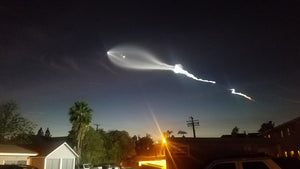November- Leonid Meteor Shower, Helix Nebula, Delta Cephie
Leonid Meteor Shower
The Leonid meteors are bright, colorful, and considered one of the most anticipated meteor showers on the year. It takes place through November, but the peak will come on the evening of November 16th this month.
The Leonids appear white or bluish white, many are faint, though some can appear outstandingly bright, leaving glowing trails in their wake. It's also been known to produce fireballs, a bright meteor that can leave a streak of color that lingers for several seconds. The fireballs originate from much bigger chunks of comet material, which produces the extra colorful display.
The Leonids are best visible after midnight. The farther you can get from light pollution the better. Let your eyes adjust to darkness for 30 minutes. Dress warmly, bring a blanket, and look up somewhat toward the Eastern sky. Meteors can appear in any part of the sky, although their trails will tend to point back toward the radiant in the constellation Leo.
The Helix Nebula
The Helix Nebula can be a challenging target for visual observers because of it's proximity to the Sun. Its low surface brightness and relatively large apparent diameter (almost the size of the full Moon) make this a great target for binocular observers and imagers. Telescopically, it’s best seen with a low power eyepiece using an O-III filter to bring out some better detail.
With binoculars it appears as a large, misty gray disc. A small telescope will show a faint ring of uniform brightness with a noticeably darker center. A large scope will reveal some structure in the ring, with the nebula brightening toward the north-northeast and south-southwest. The central star can also be visible with averted vision.
Delta Cephie
This is a famous variable star, or a star that changes brightness. Observers can see the magnitude change from 3.5 to 4.4 every 5.3663 days. Also look out for it's pale blue companion star, visible through telescopes at low power.







